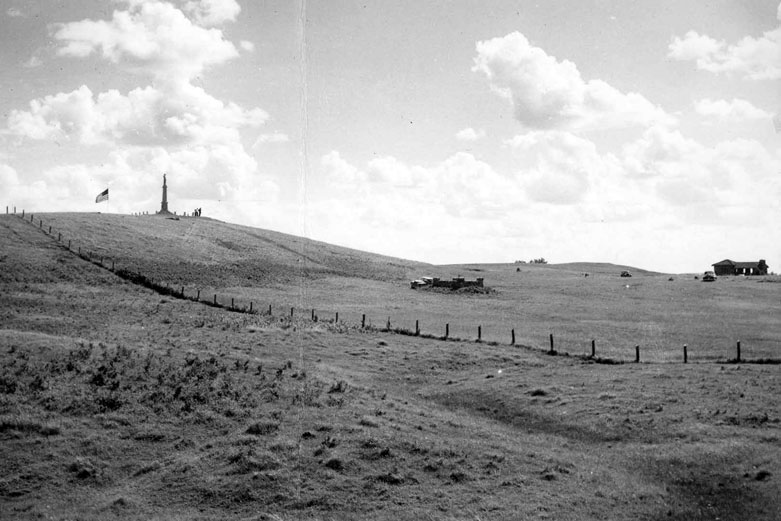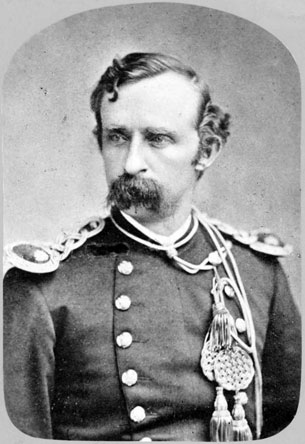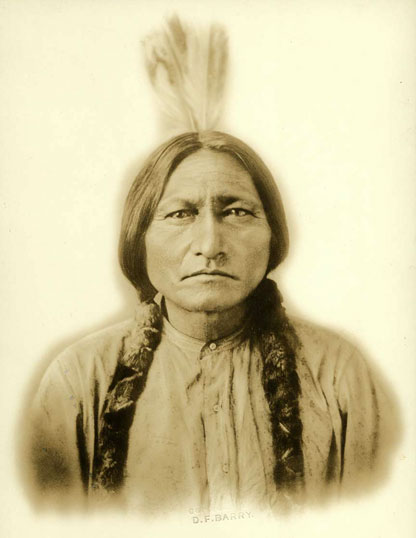We’ve launched a new web portal! Visit findhistory.nd.gov to search our collections.
Due to a road closure, the Killdeer Mountain Battlefield State Historic Site is temporarily closed.

For the most part, the incursion of the Euro-Americans into the Northern Plains caused few confrontations with Indian peoples. In 1863, 1864, and 1865, however, the pattern changed. Major military expeditions searched the Northern Plains for Santee Dakota who had participated in a violent uprising in Minnesota in 1862. Battles at Whitestone Hill in 1863 and at Killdeer Mountain and in the Badlands in 1864 diminished Dakota resistance, forcing many onto reservations to avoid starvation. A chain of military outposts, beginning with Fort Abercrombie in 1857, continually increased Federal power, and the great slaughter of the northern bison herds after 1870 eventually caused the nomadic tribes to submit. Some bands of Dakota resisted into the 1880s, but their old way of life on the plains was lost.
Several parts of the struggle between opposing cultures yet remain sources of legend and controversy. In 1876, units of the 7th Cavalry commanded by Lt. Col. George A. Custer left Fort Abraham Lincoln near Bismarck to search for Dakota who had refused confinement on reservations. 
George A. Custer
State Archives
#A0122
The resulting annihilation of Custer's immediate command 
Sitting Bull
State Archives
#0022-H-0123at the Little Big Horn River in Montana Territory made names such as Crazy Horse, Gall, and Sitting Bull familiar throughout the nation. Many Dakota moved to Canada to escape relentless punitive expeditions sent by the army, and remnants finally surrendered at Fort Buford in 1881. Nine years later Sitting Bull, the leading opponent of reservation life, identified with the Ghost Dance religion, one that forecast the return of traditional Plains Indian ways. Standing Rock Reservation Indian police were sent to arrest the elderly leader at his home in 1890, and Sitting Bull was killed.
Address:
612 East Boulevard Ave.
Bismarck, North Dakota 58505
Get Directions
Hours:
State Museum and Store: 8 a.m. - 5 p.m. M-F; Sat. & Sun. 10 a.m. - 5 p.m.
We are closed New Year's Day, Easter, Thanksgiving Day, and Christmas Day. We are closed at noon Christmas Eve if it falls on Mon.-Thurs. and are closed all day if it falls on Fri.-Sun.
State Archives: 8 a.m. - 4:30 p.m. M-F, except state holidays; 2nd Sat. of each month, 10 a.m. - 4:30 p.m. Appointments are recommended. To schedule an appointment, please contact us at 701.328.2091 or archives@nd.gov.
State Historical Society offices: 8 a.m. - 5 p.m. M-F, except state holidays.
Contact Us:
phone: 701.328.2666
email: history@nd.gov
Social Media:
See all social media accounts